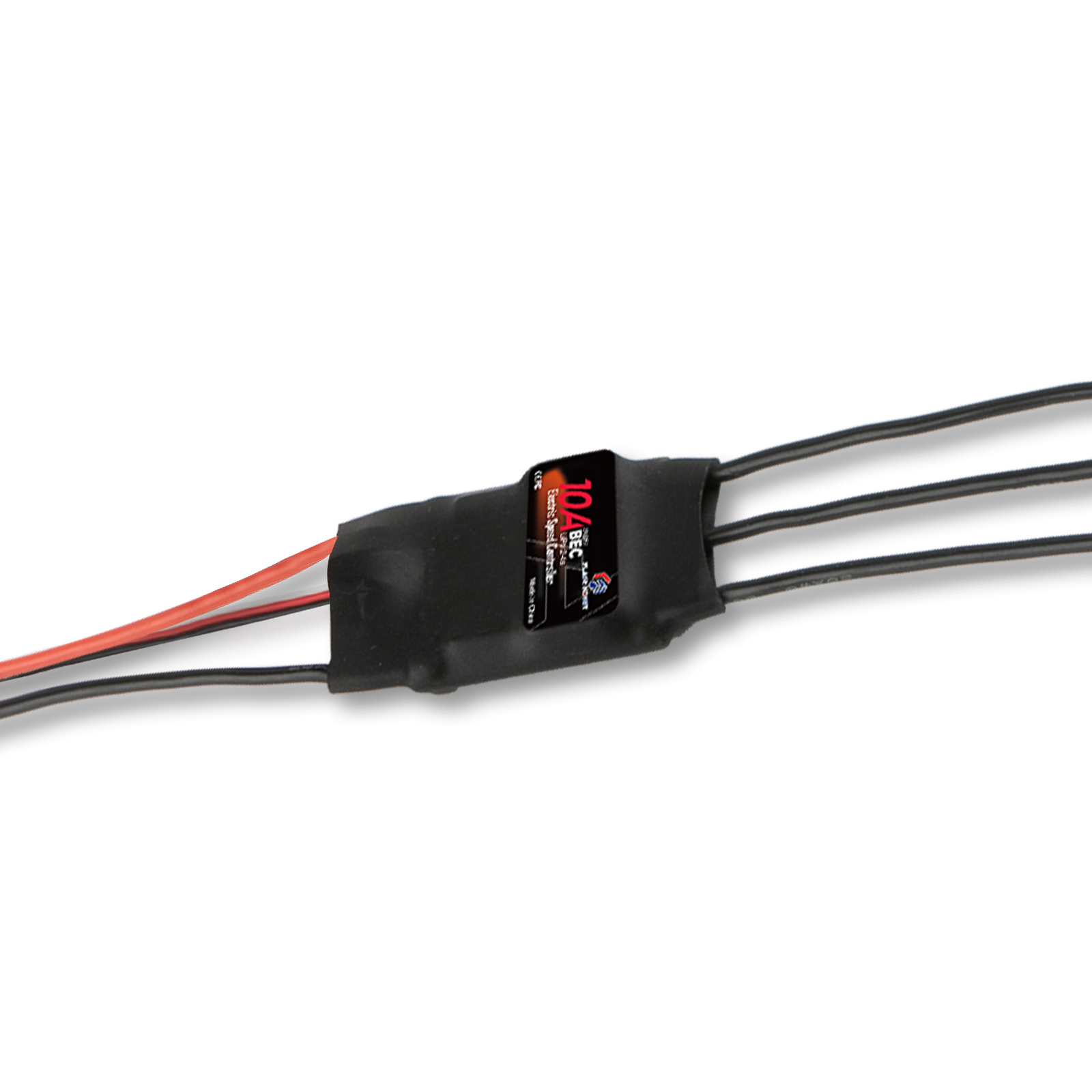Functions of an Airplane ESC
2024-06-13
An Electronic Speed Controller (ESC) is a crucial component in the propulsion system of electric airplanes, both in hobbyist and professional contexts. Here’s an overview of its functions, importance, and considerations:
Functions of an Airplane ESC
1. Speed Regulation: The primary function of an ESC is to regulate the speed of the electric motor by adjusting the power supply. It interprets the throttle signal from the receiver and adjusts the motor speed accordingly.
2. Direction Control: Some ESCs can reverse the direction of the motor, although this is less common in airplane applications compared to cars or boats.
3. Braking: Many ESCs offer braking functions to quickly stop the motor, which can be useful in certain maneuvers or for safety reasons.
4. Battery Management: ESCs often include features to manage and protect the battery, such as low-voltage cutoff to prevent over-discharge, which can damage LiPo batteries commonly used in RC airplanes.
5. Thermal Protection: ESCs typically have thermal management features to prevent overheating, which can lead to failure or reduced performance.
Importance of ESC in Airplanes
- Efficiency: An efficient ESC ensures that the electric motor runs smoothly and responds accurately to throttle inputs, which is essential for controlled flight and maneuverability.
- Safety: Advanced safety features like over-current protection, thermal shutdown, and battery management are vital to prevent in-flight failures.
- Performance: The right ESC matched with the motor and battery can significantly enhance the performance of an airplane, providing better thrust, longer flight times, and smoother control.
Key Considerations When Choosing an ESC
1. Current Rating: Ensure the ESC can handle the maximum current draw of the motor. It’s usually good practice to have a margin of safety (e.g., if your motor draws 30A, use a 40A ESC).
2. Voltage Rating: The ESC should be compatible with the battery voltage. For example, if using a 3S LiPo battery (11.1V), the ESC must support this voltage.
3. BEC (Battery Eliminator Circuit): Many ESCs include a BEC to provide power to the receiver and servos. The BEC rating should be sufficient to handle the current draw of all onboard electronics.
4. Firmware and Programmability: Some ESCs allow firmware updates and custom programming to fine-tune performance characteristics, such as throttle response and braking.
5. Size and Weight: In aircraft, weight is critical. Choose an ESC that fits within the weight budget and physical space constraints of your model.
6. Brand and Reliability: Opt for reputable brands known for quality and reliability. A faulty ESC can lead to crashes and damage.
Example of Common ESCs for Airplanes
- HobbyWing SkyWalker: Known for reliability and ease of use, suitable for many RC airplanes.
- Castle Creations Phoenix: Offers advanced programmability and high performance, ideal for more experienced users and high-performance models.
- Turnigy Plush: A popular choice among hobbyists for its balance of cost and performance.
Installation and Setup Tips
- Cooling: Ensure proper airflow over the ESC to prevent overheating. Position it where it can get adequate ventilation.
- Connections: Secure and insulate all connections to prevent short circuits. Use quality connectors like XT60 or Dean’s plugs.
- Calibration: Calibrate the ESC with the transmitter to ensure full throttle range recognition.
- Testing: Perform ground tests to check for proper operation before taking to the air.
In summary, the ESC is a vital component that requires careful selection and setup to ensure optimal performance and safety of an electric-powered airplane.



